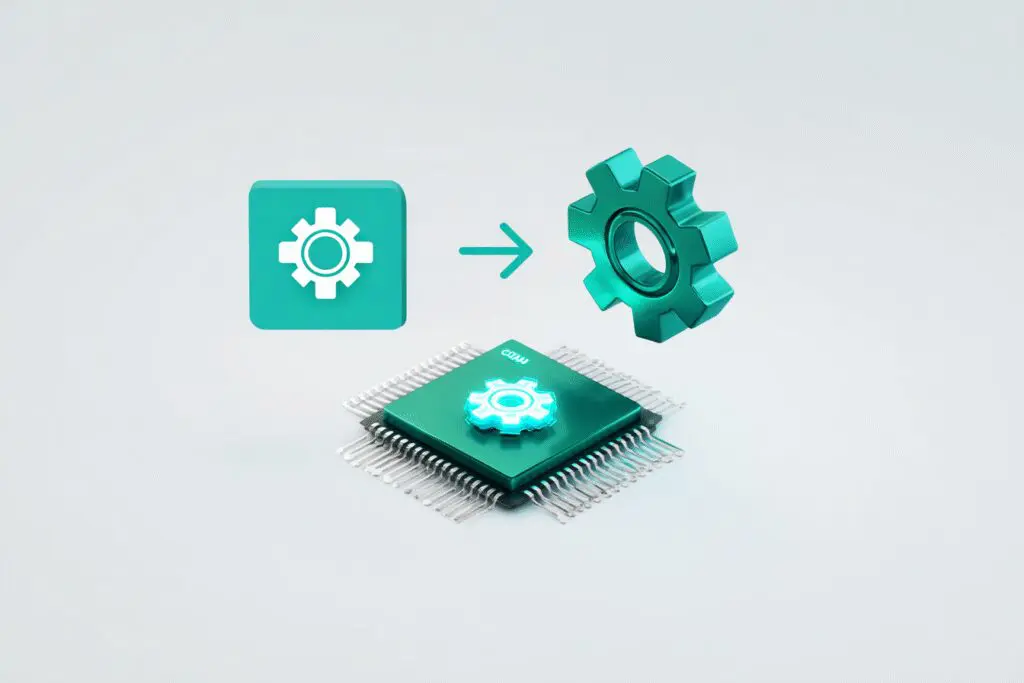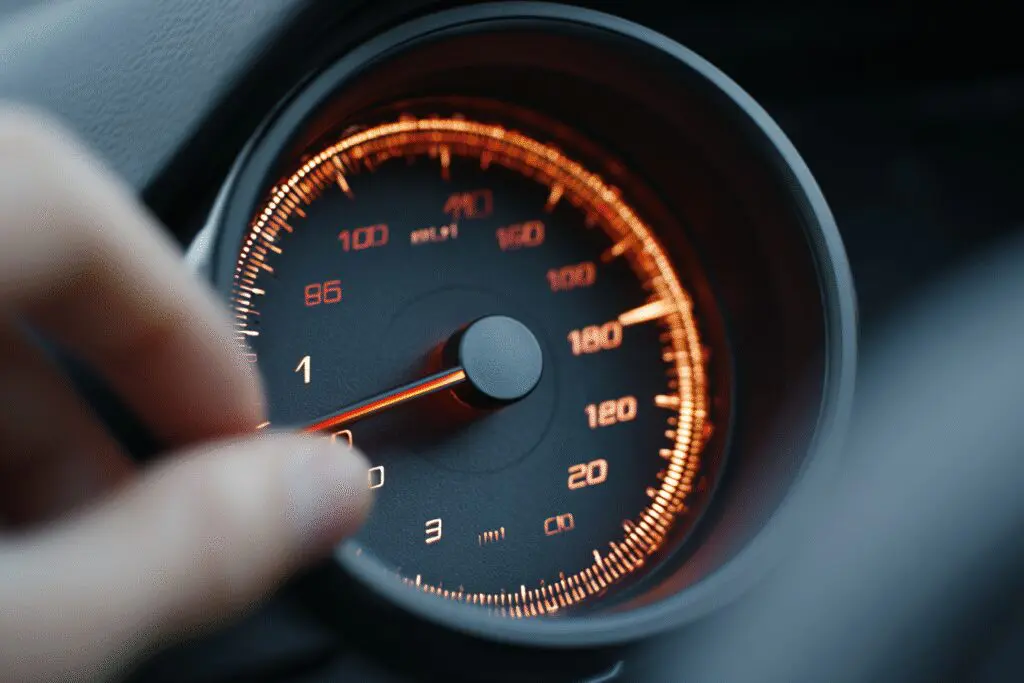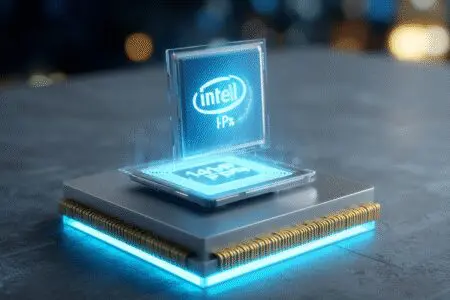I can still feel the knot in my stomach. It was years ago, late on a Tuesday night, and my brand-new PC components were spread across my desk like a patient on an operating table. The machine was built and running, but I was about to perform digital surgery. I was diving into the BIOS, a place that felt like the computer’s secret control room, to try my hand at learning how to overclock CPU for the very first time. My mouse hovered over the “CPU Core Voltage” setting, and a bead of sweat trickled down my forehead. Was I about to unlock free performance, or was I about to turn my expensive new processor into a very fancy keychain?
That mix of fear and excitement is something every PC enthusiast feels the first time they decide to push their hardware beyond its factory settings. The good news is that modern computers are much more resilient than they used to be, and the process is safer than ever. Learning the ins and outs of overclocking isn’t some dark art reserved for elite engineers; it’s a methodical process of testing and tweaking that anyone with a little patience can master.
This guide is the conversation I wish I could have had with my younger self that night. It’s a straightforward, no-nonsense walkthrough of the process, designed to give you the confidence to squeeze every last drop of performance out of your gaming rig. We’ll go through the BIOS settings, talk about safe voltages, and, most importantly, show you how to do it all without frying your components. Let’s get started.
More in CPUs & Processors Category
Is Ryzen 7 7700X Good for Gaming
Is Ryzen 5 5600X Good for Gaming
Is Ryzen 5 7600X Good for Gaming
What Exactly is CPU Overclocking and Why Should You Bother?
Before we start changing numbers in the BIOS, it’s crucial to understand what we’re actually doing. At its core, overclocking is the process of making your computer’s central processing unit (CPU) run at a higher speed than the manufacturer certified it for.
Think of your CPU’s speed, measured in gigahertz (GHz), as the tempo of a song. A higher GHz means the CPU can perform more calculations per second. This speed is determined by two main factors: the Base Clock (BCLK) and the Multiplier.
- Base Clock (BCLK): This is like the foundational beat of the system, usually set at 100 MHz.
- Multiplier (or CPU Ratio): This number is multiplied by the BCLK to get the final clock speed.
So, a 100 MHz BCLK multiplied by a multiplier of 45 gives you a clock speed of 4500 MHz, or 4.5 GHz. When we overclock, we are primarily increasing that multiplier to raise the final speed.
What are the real benefits of overclocking your CPU?
But why do it? The answer is simple: to get more performance without spending more money. You paid for that piece of silicon; overclocking lets you unlock its full potential. For gamers, this can mean higher frame rates and a smoother experience. For content creators, it can mean faster video rendering and application performance. It’s essentially a free upgrade. 🚀
What Hardware Do You Need to Overclock Your CPU?
Hold on there! Before you even think about booting into your BIOS, we need to make sure your hardware is up to the task. Trying to overclock on the wrong equipment is a recipe for frustration and potential failure. Not all CPUs and motherboards are created equal.
I learned this the hard way when I tried to help a friend overclock his PC, only to discover he had a “locked” processor. We spent an hour looking for settings that simply didn’t exist. Don’t be like us.
Here is your pre-flight checklist. Make sure you have these four things:
- An Unlocked CPU: Not all processors can be overclocked. For Intel, you need a CPU with a “K” or “X” at the end of its model name (e.g., Core i7-14700K). For AMD, the news is better—all Ryzen CPUs are unlocked and ready for overclocking right out of the box.
- A Capable Motherboard: Just like the CPU, your motherboard needs to support overclocking. For Intel systems, you’ll want a motherboard with a “Z” series chipset (e.g., Z790). For AMD, motherboards with “B” or “X” series chipsets (e.g., B650, X670) are the way to go.
- A Beefy CPU Cooler: This is non-negotiable. Overclocking generates more heat. The stock cooler that came with your CPU (if it even came with one) is not going to cut it. You need a substantial aftermarket air cooler from a brand like Noctua or be quiet!, or an All-in-One (AIO) liquid cooler. Better cooling will lead to a better, more stable overclock.
- A Quality Power Supply (PSU): An overclocked CPU draws more power. Your PSU needs to have enough wattage to handle the extra load with some headroom to spare. More importantly, it needs to provide clean, stable power. Stick with reputable brands like SeaSonic, Corsair, or EVGA.
What Software Will You Need for Stress Testing and Monitoring?
Overclocking is a scientific process. You’ll form a hypothesis (“I think my CPU can run at 5.0 GHz”), run an experiment (change the settings), and then observe the results (stress test and monitor). You can’t just guess if your system is stable; you have to prove it.
You’ll need a small suite of free tools to get the job done. I have these installed on every new PC I build, whether I plan to overclock it or not. They are essential for monitoring the health of your system.
Here is the software you should download and install before you begin:
- CPU-Z: A lightweight tool that gives you a quick and easy way to see your current CPU clock speed and core voltage in real-time. It’s perfect for confirming that your BIOS changes have actually been applied.
- HWiNFO64 or Core Temp: These are your eyes on the inside. You absolutely must monitor your CPU temperatures during this process. HWiNFO64 is incredibly detailed, while Core Temp is simpler and just focuses on CPU temps. Pick one and keep it open at all times during testing.
- Cinebench R23: This is a fantastic benchmarking tool. It renders a complex 3D scene and gives you a performance score. It’s great for quickly checking if your overclock is somewhat stable and for seeing a tangible performance improvement from your efforts.
- Prime95 or AIDA64: These are the heavy hitters. They are stress-testing programs designed to push your CPU to its absolute limit, generating a ton of heat and checking for calculation errors. A successful run in one of these for an extended period is the gold standard for proving stability.
How to Overclock CPU: A Step-by-Step Guide to the BIOS
Alright, the moment of truth has arrived. You’ve confirmed your hardware is ready, and your software is installed. It’s time to head into the BIOS. First, restart your computer and repeatedly press the “Delete” or “F2” key on your keyboard as it’s booting up. This will take you into the BIOS/UEFI interface.
Every motherboard’s BIOS looks a little different, but the core principles and settings are universal. You’ll likely need to switch to an “Advanced” or “Expert” mode to see all the options. Take a moment to just look around and get your bearings. Don’t change anything yet!
The process is iterative. We will make one small change, boot into Windows, test for stability, and repeat. Patience is the key to success.
How do you find your CPU’s safe voltage limit?
This is the most critical question in our quest for how to overclock CPU safely. Voltage is the electricity you’re feeding the CPU. More speed requires more voltage, but too much voltage can permanently damage your chip. We need to find the sweet spot.
The safest approach is to do a quick search online for your specific CPU model + “safe voltage.” You’ll find countless forum threads and articles where the community has determined the general safe limits. For most modern CPUs, anything under 1.4 volts is generally considered safe for daily use, but you should always verify this for your specific chip. We will start with a lower voltage and only increase it in tiny increments as needed.
What is the CPU Multiplier and how does it affect my overclock?
This is the setting we’ll be changing the most. Look for a setting called “CPU Ratio,” “Core Ratio,” or “CPU Multiplier.” This is where you’ll set your target clock speed. I recommend setting it to “Sync All Cores” or a similar setting so that all cores of your CPU run at the same speed. Start by increasing the multiplier by 1 from its default value. This will increase your clock speed by 100 MHz.
How to Overclock CPU without causing system instability?
This is the core loop of the overclocking process. It’s a delicate dance between the multiplier and the voltage.
- Set a Starting Point: In your BIOS, set the CPU Core Voltage (often called “Vcore”) to a manual value, like 1.30V. Then, increase your CPU multiplier to a conservative starting point (e.g., if your CPU boosts to 4.5 GHz, try setting all cores to 46 for 4.6 GHz).
- Save and Boot: Save your settings and exit the BIOS. See if your computer successfully boots into Windows.
- Quick Test: If it boots, open CPU-Z to confirm the new clock speed and HWiNFO64 to watch your temps. Run a 10-minute Cinebench R23 multicore test.
- Analyze the Result:
- If it passes: Great! Go back to the BIOS and increase the multiplier by 1 (e.g., from 46 to 47). Repeat the process.
- If it crashes or freezes: This means the CPU doesn’t have enough voltage to be stable at that speed. Go back to the BIOS and increase the CPU Core Voltage by a tiny amount, like 0.01V (e.g., from 1.30V to 1.31V). Try the test again at the same multiplier that failed before.
- Repeat: Continue this process of increasing the multiplier until it’s unstable, then increasing the voltage slightly until it’s stable again. You will eventually hit a wall where you either need a lot more voltage for a tiny speed increase, or your temperatures get too high. This is your limit.
What are the best BIOS settings for a stable overclock?
However, there is one other setting that can be very helpful: Load-Line Calibration (LLC).
When your CPU is under heavy load, the voltage can sometimes droop slightly, which can cause instability. LLC counteracts this droop. Look for this setting in your BIOS and try setting it to a medium level (e.g., “Level 4” or “Medium”). This can often make your overclock much more stable without needing to use a higher voltage. For most other settings, leaving them on “Auto” is perfectly fine for a beginner.
The Art of Stress Testing: How Do You Know Your Overclock is Truly Stable?
Passing a 10-minute Cinebench run is a great start, but it doesn’t mean your system is rock-solid. Cinebench is a benchmark; a stress test is a different beast entirely. Stress tests are designed to find any potential instability by running complex calculations that push your CPU and memory to their absolute limits.
Once you’ve found a clock speed and voltage that seems stable in Cinebench and keeps your temperatures in a safe range (ideally below 90°C under full load), it’s time for the final exam.
How long should you stress test an overclocked CPU?
Download Prime95 and run the “Small FFTs” test. This test generates the most heat and is brutal on the CPU. Your goal is to run this test for at least an hour without any of the “workers” stopping with an error and without your system crashing or your CPU temperatures exceeding 95°C.
If you can pass an hour of Prime95, your overclock is almost certainly stable enough for any daily task, including intense gaming sessions. Some purists will run it for 8 hours or more, but for most users, an hour is a perfectly sufficient validation.
Is Overclocking Still Worth It Today?
This is a fair question. Modern CPUs from both Intel and AMD have incredibly sophisticated boost technologies built right in. Intel’s Turbo Boost and AMD’s Precision Boost Overdrive are designed to automatically push the CPU’s clock speed as high as possible based on the thermal and power headroom available. They do a pretty good job!
So, is manual overclocking a dead art? Not quite. While these auto-boosting technologies are great for single-core or lightly threaded tasks, a manual all-core overclock will almost always result in better performance in heavily multi-threaded workloads, like video rendering or running complex simulations.
For most gamers, the difference might be negligible. But for enthusiasts who want to get every last ounce of performance from their hardware, and for those of us who just enjoy the process of tinkering, a manual overclock is still a rewarding endeavor. It’s become less of a necessity and more of a hobby.
What is the final takeaway on overclocking?
So, we’re back where we started, hovering over those BIOS settings. But now, you’re armed with knowledge and a clear, safe process.
The key is to be patient, make small, incremental changes, and always, always keep an eye on your temperatures. The goal isn’t to set a world record; it’s to find a stable, 24/7 overclock that gives you a nice performance boost without putting your hardware at risk.
That feeling when you finally find your chip’s sweet spot, pass a long stress test, and see that tangible performance gain in your favorite game or application is incredibly satisfying. You didn’t just buy a fast computer; you made it faster. Good luck, and have fun tinkering!
Frequently Asked Question

What steps should I follow to overclock my CPU via BIOS?
Enter your BIOS by restarting your PC and pressing a key like Delete or F2. Navigate to performance settings such as Ai Tweaker or OC. Increase the CPU core ratio gradually, leaving BCLK at 100. Adjust voltage to manual if needed, start with a safe voltage like 1.25V, and test stability after each change. Keep an eye on temperature and voltage limits, and use a stress test to verify stability before proceeding further.
How do I safely test my CPU’s current performance before overclocking?
First, close unnecessary programs and monitor your CPU’s temperature and speed using HWiNFO64. Then, run a speed test in Cinebench R23 to get a baseline score, followed by a 30-minute stress test with Prime95 to check maximum stable temperature. Record these results to compare with after overclocking.
What hardware and software do I need to start overclocking my CPU?
You need an unlocked processor compatible with overclocking, a motherboard with a compatible chipset like Z-series for Intel or X-series for AMD, a better cooling solution such as an air or liquid cooler, a reliable power supply, and software tools like HWiNFO64, Cinebench R23, Prime95, and AIDA64 for monitoring and testing your system.
Is overclocking safe for my CPU?
Yes, overclocking can be safe if you do it carefully. The main risks include excessive heat, increased voltage, system instability, and voiding your warranty. The key is to proceed slowly, monitor temperatures and voltages, and ensure proper cooling to avoid damaging your CPU.
What is overclocking and why do it?
Overclocking means making your computer parts run faster than their set speed at the factory, measured in gigahertz (GHz). It is like tuning a car engine for more power, providing benefits such as increased speed for gaming and video editing, better value by overclocking cheaper CPUs, and the enjoyment of tinkering and learning how your system works.




